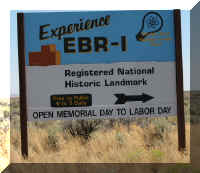 We
were focused on the white buildings on the other side of the road. We almost missed
this Historic Landmark.
We
were focused on the white buildings on the other side of the road. We almost missed
this Historic Landmark. Experimental Breeder Reactor 1 - 2008 . . .
on our
route to the Pacific Northwest
Updated: 11/30/08
 We
were focused on the white buildings on the other side of the road. We almost missed
this Historic Landmark.
We
were focused on the white buildings on the other side of the road. We almost missed
this Historic Landmark.
It is located in the middle of a desert area. We were driving directly into the wind. So, a stop for a while was good.
We turned the HHII around and were pushed back to the Experimental Breeder Reactor 1 (EBR-1) by, what was now, a tailwind.
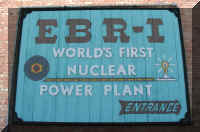 The EBR-1 is
located about 50 miles Northwest of Idaho Falls, ID on Route 20, or about 20 miles
East of Arco, ID.
The EBR-1 is
located about 50 miles Northwest of Idaho Falls, ID on Route 20, or about 20 miles
East of Arco, ID.
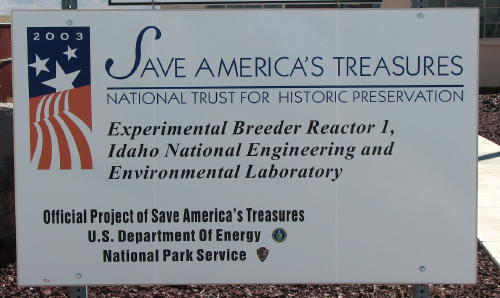
Plant layout . . .
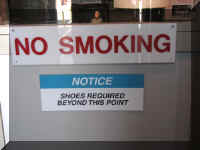
The first look inside . . .
During the summer months, college students act as tour guides. However, they had all returned to school so there was a Idaho National Laboratory (INL) employee there to answer questions. A self-guided tour was well documented in a handout. While we found the tour very interesting, we have a friend at home who would have found it exciting. Bud is a nuclear scientist/engineer who worked at a nuclear power plant in Michigan.
This classroom was the first stop on the tour, it gave you a crash course in chain reaction and the principles involved in a breeder reactor. EBR-1 was a breeder because it "bred" more plutonium-239 atoms than the uranium atoms it consumed.
From the Control Room scientists started and stopped the chair
reaction and controlled the equipment for making electricity. We were struck by
the dials, buttons, analog meters - lack of computer controls which were not in use in
1951.
In this, and several other areas, you could watch videos of scientists who
worked at the facility explaining what it was like during the 1950's.
A.N.L. Sign . . . the EBR-1 was the first nuclear reactor to generate a usable amount of electricity.
The reactor . . .
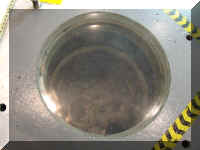
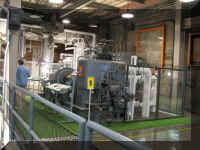
Historic bulbs . . . The first electricity generated at EBR-1 illuminated four light bulbs like the ones seen here. They are strung just as the original bulbs were in 1951.
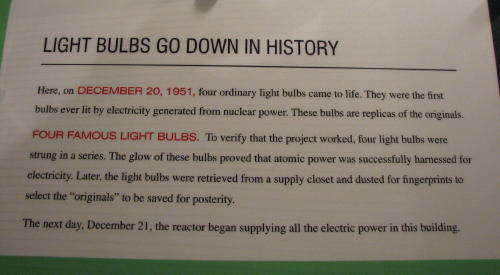
In this area, water was converted into high-temperature steam. The steam was then piped through these tubes to the turbine/generator where it produced electricity.
These plaques were installed during the dedication ceremony in 1996 designating ERB-1 as a Registered National Historic Landmark.
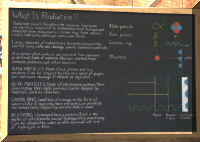 This
sign was placed as an educational opportunity for visitors.
This
sign was placed as an educational opportunity for visitors.
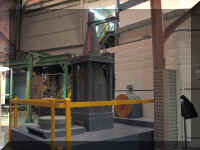
Rods were stored in the individually numbered holes, known collectively as the rod farm. The chalk board was used to keep track of the spent rod inventory.
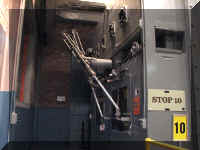
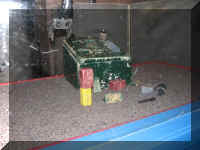
Fred stacked the red block on the yellow one the first try.
This is the hot cell - used for the inspection and repair of radioactive materials. The window's 34 layers of glass (total thickness of 39 inches) and 39 inch thick walls provided radiation protection.
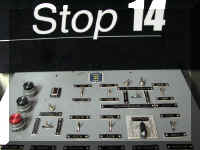
This area provided a view of where heat from the liquid metal in the reactor was transferred to the second system of liquid metal.
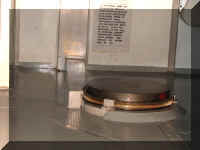
The center photograph above is the view of the bright metal plate in the floor through the thick widow.
There
were interesting displays giving information about
the early days of nuclear
power research and development.
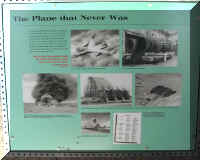
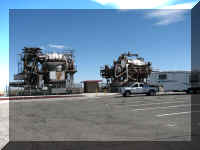
The white buildings on the other side of the road are part of a huge complex of Idaho National Laboratories (INL). They are engaged in research and development of a variety of products including practical wearable personal armor for the military. INL is part of the Department of Energy - Office of Nuclear Energy, Science and Technology.
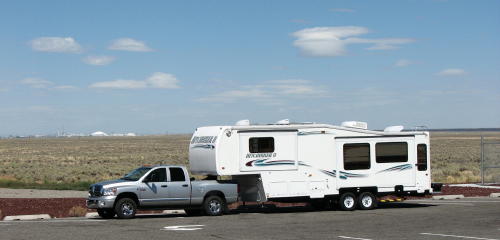
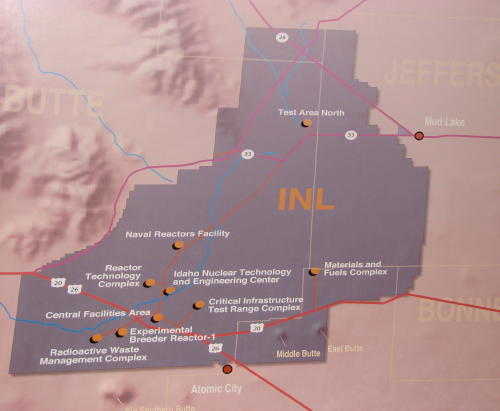
They also have the expertise, infrastructure and strategic partnerships necessary to advance the state of the art in nuclear safety analysis, irradiation services, nuclear operations, management of spent nuclear fuel and the biocorrosion of fuels.
The tour is free. We spent about an hour and a half looking around EBR-1. Some stairs are part of the walking tour.
GO BACK TO > > > Pacific Northwest - 2008